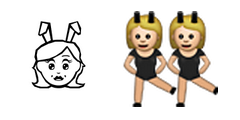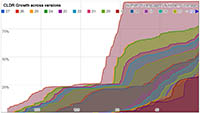
Mountain View, CA, USA – The Unicode® Consortium today announced the start of
the beta review for the forthcoming Unicode 8.0.0, which is scheduled for
release in June, 2015. All beta feedback must be submitted by April 27, 2015.
Unicode is the foundation for all modern software and communications around
the world, including all modern operating systems, browsers, and smart phones;
modern web protocols (HTML, XML, ...); and internationalized domain names. Thus
it is important to ensure a smooth transition to each new version of the Unicode
Standard.
Unicode 8.0.0 comprises several changes which require careful migration in
implementations, including the conversion of Cherokee to a bicameral script, a
different encoding model for New Tai Lue, and additional character repertoire.
Implementers need to change code and check assumptions regarding case mappings,
New Tai Lue syllables, Han character ranges, and confusables. Character
additions in Unicode 8.0.0 include emoji symbol modifiers for implementing skin
tone diversity, other emoji symbols, a large collection of CJK unified
ideographs, a new currency sign for the Georgian lari, and six new scripts.
For more information on emoji in Unicode 8.0.0, see the associated
draft Unicode Emoji report.
Please review the documentation, adjust your code, test the data files, and
report errors and other issues to the Unicode Consortium by April 27, 2015.
Feedback instructions are on the beta page.
About the Unicode Consortium
The Unicode Consortium is a non-profit organization founded to develop,
extend and promote use of the Unicode Standard and related globalization
standards. The membership of the consortium represents a broad spectrum of
corporations and organizations in the computer and information processing
industry. Members are: Adobe Systems, Apple, Google, Government of Bangladesh,
Government of India, IBM, Microsoft, Monotype Imaging, Sultanate of Oman MARA,
Oracle, SAP, Tamil Virtual University, The University of California (Berkeley),
Yahoo!, plus well over a hundred Associate, Liaison, and Individual members.
For more information, please contact the Unicode Consortium
http://www.unicode.org/contacts.html.






